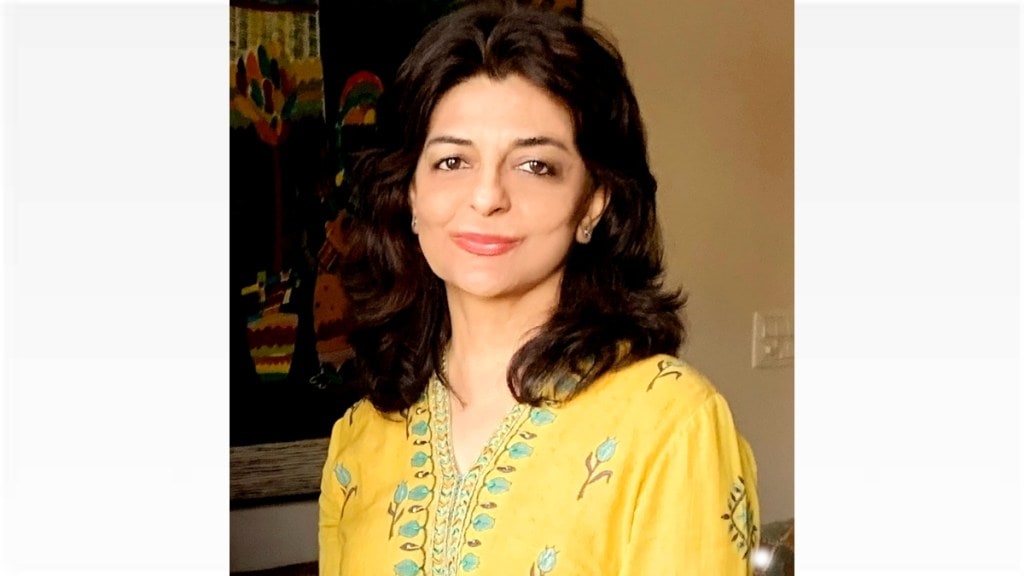Gender diversity in the aerospace sector has been historically underrepresented, with women making strides in recent years to break through barriers and take on prominent roles from flight crews to engineering positions. At Wings India 2024, it was highlighted that close to 15 percent of pilots in India are women, marking significant progress in a traditionally male-dominated field. While there is momentum towards greater inclusivity, key issues such as fewer women pursuing careers in mechanical or heavy engineering and a slowdown in women rising to leadership positions in STEM fields persist.
Addressing these challenges is crucial not only for fostering diversity but also for unlocking the full potential of the aerospace industry. Companies like Pratt & Whitney are leading by example, with women occupying top leadership positions globally and in India, demonstrating the importance of representation at all levels. In an exclusive interaction with Financial Express Online, Ashmita Sethi, president & country head, Pratt & Whitney, India, UTCIPL suggested that initiatives focusing on skill development, encouraging participation in R&D projects, and ensuring equal pay are essential steps towards a more inclusive and innovative future for the sector.
Following are excerpts of the interaction with Ashmita Sethi, president & country head, Pratt & Whitney, India, UTCIPL :
What are your thoughts on gender diversity in the aerospace sector, do you think there is an under representation?
Aerospace & defense was traditionally a male-dominated industry, both in the corporate and technical side of the business. But now women are now significantly increasing their presence – from the flight crews that operate complex, multi-million-dollar aircraft right down to the engineers that design and build these machines.
At Wings India 2024, honorable Civil Aviation Minister mentioned that close to 15 percent of pilots in India are women. That is one of the largest such figures in the world! This not only brings diversity to the table but also ensures that women in managerial and leadership positions bring a fresh perspective on how to shape the future of aviation.
What are the key issues you see today? Do you think underrepresentation has a potential underlying cost?
There are two key issues that need tackling: On a global scale, fewer women are taking up careers in mechanical or heavy engineering, possibly assuming that the jobs are physically challenging, and second, the slowdown of women becoming leaders in STEM careers. We need more women with seats at the table, and in leadership positions in India. When the population of women (female gender) is close to 50percent in the world, look at what a difference it would make to the world if all the 50 percent of those women came into roles and jobs which contribute to the STEM sectors.
Adding more women to an essential industry such as mechanical or heavy engineering, particularly aerospace, will increase the available talent pool for the sector, thereby increasing the human and intellectual resources that are needed for step-change innovation and growth. This is sure to fast track the development of the indigenous aerospace ecosystem in India – especially when India is focused on homegrown innovation and Atmanirbhar Bharat.
There is an upward trend for women leaders in aerospace in India – and I hope with concerted efforts being made by the industry, the ministry and the regulators, this will only accelerate in the years to come.
How is Pratt & Whitney giving opportunity to women in leadership roles?
At Pratt & Whitney,an RTX business, we have been leading by example on this front. Some of the top global executives for Pratt & Whitney are women – we have Jill M. Albertelli as our President, Military Engines; Maria Della Posta, President, Pratt & Whitney Canada and Raquel Rivera, SVP, Operations & Supply Chain, to name a few.
Right here in India, in addition to my role as country head of Pratt & Whitney in India, Rema Ravindran leads our India Engineering Center and our R&D Center at IISc, Bengaluru is led by Dheepa Srinivasan.
We continue to encourage women in aerospace at Pratt & Whitney in India – and we are well on track to hit our gender diversity targets. We have excellent career opportunities throughout the country, and I encourage anyone interested in the aviation industry to visit our Careers page.
How can aerospace companies promote women to take up more leadership and STEM roles in the sector? Can upskilling and training programs help?
The Ministry of Civil Aviation expects the sector to generate 1.5 lakh jobs over the next two years. Direct and indirect jobs created by aviation & aerospace manufacturing are expected to touch 20 lakh by 2024. While this sector contributes just 5percent to the overall GDP, there is an opportunity for the latent growth potential to increase this percentage. Imagine then the opportunities for women to make a significant mark in this space and accelerate the development of this sector. But for this to happen, certain key areas will need to be worked on.
Firstly, there will be a need to create more skill development opportunities for women within the sector. These opportunities for skilling could be in the form of encouraging more women towards STEM education or even creating vocational courses that enable women to join the frontline workforce in aerospace.
Secondly, women should be encouraged – by both industry and academia – to take up R&D projects. Support through policies and initiatives will play a major role in pushing women towards innovating for the future of flight. The outcomes of such R&D roles will be significantly better with the input from various perspectives and innovations.
Finally, there will be a need to eliminate the pay disparity between women and their male counterparts. Equal pay for the same roles and same skills will encourage women towards investing in a long-term commitment towards their jobs and the development of the aerospace & defense sector.

